|
|
Post by Michael Capasse on Jun 16, 2021 10:31:10 GMT -5
On the Garrison Trail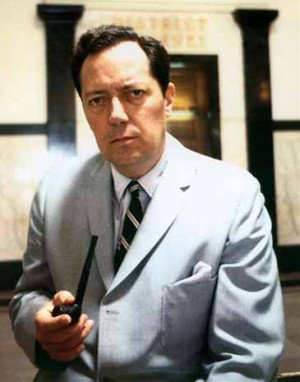 Earling Carothers "Jim" Garrison was born Nov. 20, 1921, in Knoxville, Iowa. His parents were Earling R. Garrison and Jane Anne Robinson. The family moved to New Orleans when he was only two years old and divorced soon after, leaving the boy to be raised by his mother. At some point, he legally changed his first name to James, and enlisted in the US Army one year before the Pearl Harbor attacks. After the war, he graduated Tulane University with a law degree, and began working for the FBI, stationed for two years in Seattle. He joined the National Guard, and eventually rejoined the Army in 1951. he was soon relieved from active duty due to reoccurring nightmares. One doctor's examination said he suffered from, "severe and disabling psychoneurosis" which "interfered with his social and professional adjustment to a marked degree", but a further review from the US Surgeon Gen., "found him to be physically qualified for federal recognition in the national army." "Post traumatic stress disorder", before they called it that. Once home, he worked as a trial lawyer before winning his first of 3 terms as District Attorney. In late 1966, Garrison started his own investigation into the assassination of President John F. Kennedy. His main focus was local businessman, Clay Shaw. Shaw was the founder of the International Trade Mart, a non profit, made up of business dedicated to improve international trade with New Orleans. Garrison suspected that Shaw was involved with the CIA and had interests in Cuba, and was involved in the events of Dallas. His investigation led to the only trial in the case, and although Shaw was acquitted, what was left by the Garrison team are some one of the most important facts in the case. One of the most important pieces of evidence to come out of the the Clay Shaw trial was the Zapruder film, subpoenaed by Garrison from LIFE Magazine. From there, it was smuggled out, then dubbed, and sold from the backs of underground magazines. Public talk and the Church Committee's examination of CIA abuse in 1975, caused more concern with the government's coverup in the events of Dallas, and that led to the Zapruder film being broadcast on television, and that led to the HSCA. Unfortunately the HSCA closed the lid on any New Orleans connection to the assassination as itself was tainted with a CIA liaison, George Joannides, who failed to disclose to the committee, his association with the Cuban groups that Lee Oswald was involved with in 1963. A New Orleans connection to the assassination runs deep, from gun running to sheep-dipping. What went on during that summer in the Big Easy cannot be ignored as a mere coincidence when the accused assassin spent unaccounted time meeting with others, as both a loner and [anti] communist.
|
|
|
|
Post by Michael Capasse on Jun 16, 2021 10:31:44 GMT -5
Further Inquire Required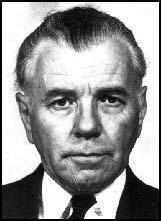 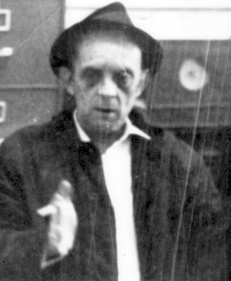 Guy Banister Jack Martin Guy Banister Jack MartinGuy Banister was a private investigator, ex G-man, that knew Garrison from his FBI days. They would occasionally have lunch and swap war stories. On Nov. 22 nd Banister spent the day drinking with one of his private detectives, Jack Martin. Garrison described Jack as, "..quick-witted and highly observant, if slightly disorganized, private detective.."When the two men returned to the office, an argument ensued from a comment Martin made about the strange "going's on" he had seen. A drunken Banister proceeded to pistol whip Jack in to the hospital with his .357 Magnum, police report K-12634-63, is a record of the incident. Meanwhile, Garrison had done some preliminary background on Oswald once the news announced he had stayed in New Orleans that summer. In some initial investigations they found the Lee had been seen around town with David Ferrie. Garrison immediately put this on priority. From his hospital bed, Martin told the Garrison team that Ferrie had driven to Dallas to be a "getaway" pilot for the real assassins. Then, Asst. DA Herman Kohlman verified thru another source that Ferrie took a trip to Texas on the day of the assassination, but to Houston. This all happened thru the course of that weekend. Garrison had his men staked out at Ferrie's apt. and David was brought in Monday 11/25. Ferrie told Garrison he wanted to go ice skating, and he and some friends knew of a rink in Houston. He had no reasonable explanation why he had to leave for Texas in one of the worst thunderstorms in recent years. Or the odd fact that he never put on a pair of skates and spent the entire time on a pay phone making and receiving calls. From Houston, Ferrie went on to Galveston, there he stayed Saturday night. Jack Ruby called a number in Galveston that same evening. Years before, Jack had been running guns to Cuba out of Galveston Bay. Based on the answers he heard, and observations of the suspect, Garrison recommended Ferrie be held for further questioning by the FBI.
|
|
|
|
Post by Michael Capasse on Jun 16, 2021 10:32:18 GMT -5
David Ferrie David William Ferrie, was a pilot originally from Cleveland Ohio. Lee met Ferrie in 1955, while in the Civil Air Patrol, in New Orleans. Born in 1919, David was 20 years his senior, and would have had a big influence on a very impressionable, 15 year old, Lee Oswald. There is no apparent Oswald connection to New Orleans for about 8-9 years. Then in April of '63, Lee went back and was seen with Ferrie, and ex FBI agent, Guy Banister at their Camp Street address. That address, including Oswald's name, was found on leaflets after the assassination. The HSCA exposed the Warren Commission's lack of sufficient due diligence in probing this address further. The committee found further that the FBI "...overall investigation of the 544 Camp Street issue at the time of the assassination was not thorough." "The Warren Commission stated in its report that despite the Commission's probe into why Oswald used this return address on his literature, "investigation has indicated that neither the Fair Play for Cuba Committee nor Lee Oswald ever maintained an office at that address." (280)" (HSCA Report page 171) David Ferrie was taken into custody and questioned by the FBI before the end of '63 After what they called a thorough investigation into Mr. Ferrie, they found no credible evidence linking David Ferrie to Lee Harvey Oswald Yet the HSCA found:Oswald – who had been living in New Orleans in the summer of 1963 – had established contact with anti-Castro Cubans and "apparently" with American anti-Castro activist, David Ferrie. The Committee also found "credible and significant" the testimony of six witnesses who placed Oswald and Ferrie in Clinton, Louisiana, in September 1963. The Camp St. address alone, should have been enough. Garrison footnote:"In 1979, when the House Select Committee on Assassinations announced its conclusions, it stated that
President Kennedy probably was assassinated “as the result of a conspiracy.” It acknowledged that one
of the possible indications of a conspiracy was Lee Oswald’s apparent association in New Orleans with David Ferrie."+++++++++++++++++++++++++++++++++++++++++++++++++++++++++ David Ferrie Interview tape 4/1/67 Researcher Dennis Morissette, found a tape of someone reading a statement prepared by David Ferrie. That tape confirms the relationship with Banister, Arcacha Smith, and Jack Martin (PI) It documents the affiliation with The Cuban Revolutionary Front and confirms it was under the State Dept. 20:24 "...during the following week three friends of mine (names them) were arrested at approximately 10 O'clock on the evening of Aug 29th at the home of Sergio Arcacha Smith who is the New Orleans Delegate for the Cuban Revolutionary Front under the sponsorship of the United States State Dept." 29:35 "I sought help and advise from various sources including Mr. Guy Banister..." 30:24 "On or about November 16 1961 one of Mr. Banisters acquaintances and agents, a private detective Jack Martin offered to help me."
|
|
|
|
Post by Michael Capasse on Jun 16, 2021 10:32:44 GMT -5
Shadow Foxing The FBI was already investigating David Ferrie in 1961. David had been involved with the Bay Of Pigs invasion that spring. As early as 1959 Ferrie was flying guns into Cuba to help the rebel forces, and after a 26 hour surveillance by authorities was cleared of any wrong doing. In '61 he flew bombing missions over Cuba for Batista supporter, Eladio Del Valle. When Castro announced he would turn Communist and align his philosophy with that of Khrushchev and the Kremlin, Ferrie became a member of "Cuban Revolutionary Front", a State Dept. sponsored organization that included funding from New Orleans Mob boss, Carlos Marcello. In '61 the "Cuban Revolutionary Front" became, the "Cuban Revolutionary Council". An April FBI memo confirms Marcello contributed funds to the groups in exchange for concessions in Cuba after Castro's overthrow. Sergio Arcacha Smith was in charge of the organization. Meanwhile, Ferrie was questioned in August '61 concerning submarines he had built for the attack, he told the FBI he was working for Cuban Revolutionary Front, 207 Batter Building, New Orleans, Louisiana, off and on since November 1960. Throughout his time in New Orleans that summer, Lee Oswald was shadowed by an FBI agent, Warren de Brueys. de Brueys attended anti Castro meetings where every one there knew he was an agent. He was sticking very close to these meetings, making himself known, but was unwanted. Cuban immigrant, Orset Pena, complained and two days later was threatened by de Brueys, "...not to talk about him any more because what he could do is get me in big trouble..." Pena told Wesiberg, de Brueys showed up about 50 times, and a number of those, was obviously with Lee Oswald. An FBI agent that "When Oswald left New Orleans so did de Brueys. When Oswald wound up in Dallas so did de Brueys. When he was no longer in Dallas neither was de Brueys. He came back to New Orleans when Oswald got murdered a remarkable coincidence, gentlemen." The FBI was well aware of David Ferrie as a member of Anti-Castro groups, and may have been involved in the Bay of Pigs. At the same time, the authorities were watching Lee Oswald attend Anti-Castro meeting with an undercover FBI agent in tow. Once David was released, the FBI issued a statement that they had found no connection between Ferrie and Lee Harvey Oswald. With knowledge in the background of both men it was an obvious lie, then parred as being precipitated by the Orleans Parish District Attorney.
|
|
|
|
Post by Michael Capasse on Jun 16, 2021 10:33:06 GMT -5
JFK SCENE
FBI OFFICE - NEW ORLEANS (1963)
At a small press conference, the FBI spokesman reads a statement.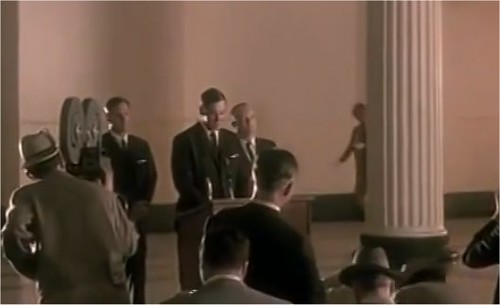 FBI SPOKESMAN Gentlemen, this afternoon the FBI released David W. Ferrie of New Orleans. After extensive questioning and a thorough background check, the Bureau found no evidence that ... GARRISON'S OFFICE - SIMULTANEOUS WITH PREVIOUS SCENEIn Garrison's office see the same broadcast, on the portable television.
Lou, Broussard, Numa and Jim watch.... Mr. Ferrie knew Lee Harvey Oswald or that he has had any connection with the assassination of President Kennedy. The Special Agent in Charge would like to make clear that Mr. Ferrie was brought in for questioning by the District Attorney of Orleans parish, not by the Federal Bureau of Investigation. The Bureau regrets any trouble this may have caused Mr. Ferrie ... JFK (1991) by Oliver Stone and Zachary Sklar.
|
|
|
|
Post by Michael Capasse on Jun 20, 2021 10:39:59 GMT -5
The Long and the Short of it Sen. Russell Long Sen. Russell LongAfter David Ferrie was released from the FBI in late Nov. '63, Garrison closed his file on the Kennedy Assassination. The next three years were very successful, the DAs office never lost a case, nor would they again for another eight years. One day, in the fall of '66, Garrison was talking to La. Senator Russell Long, during a trip to NY. The topic of the assassination came up and Long told Jim, he did not believe the Warren Commission conclusions. Garrison remembered his encounters with David Ferrie and Jack Martin, but never gave it much thought after that. When he got home he ordered a copy of the 26 volumes of pictures and exhibits, and a copy of the Warren Report. While he waited for the books, he did some preliminary study on how the Commission was formed. The first word of a Presidential Commission came in writing from acting Attorney General, Nicholas Katzenbach. Though, his memorandum to White House Press Secretary, Bill Moyers has always raised suspicions about a cover up. The warning of "...Congressional hearings of the wrong sort...", acts as a ploy to secure a committee, hand picked. Right on time, NY Rep. Charles Goodall recommended a Joint Congressional Committee five days after the assassination. Two days later, the President announced he had already chosen a committee of seven that included two representatives from each chamber. +++++++++++++++++++++++++++++++++++++++++++++++++++++++++ On the Trail of the Assassins | Jim Garrison"I looked up biographical information on each of his selections. It was apparent that his investigative group was notably weighted with men whose backgrounds were pro-intelligence or pro military. Allen Dulles, had been director of the C.I.A. for nine years. Representative Gerald Ford, was described by Newsweek as “the C.I.A.’s best friend in Congress.” Senator Richard Russell, chaired the Senate Armed Forces Committee and headed its subcommittee on intelligence. John J. McCloy, had served as assistant secretary of war and as the United States government’s high commissioner in occupied Germany at the end of World War II. At the time of his appointment to the Warren Commission, he was generally regarded as the unofficial top member of the American foreign policy establishment.* Garrison footnote:"Rounding out the Commission were Chief Justice Earl Warren, Representative Hale Boggs of Louisiana,
and Senator John Sherman Cooper of Kentucky."
|
|
|
|
Post by Michael Capasse on Jun 20, 2021 10:40:45 GMT -5
From the Garden A discussion about the assassination with Sen. Russell Long prompted Jim to order the a complete set of the Warren Report, 26 volumes. As he went thru evidence he found what he called, "...mass of information disorganized and confused...", a number of promising lead were never followed up and the conclusions seemed to be based on, "...an appalling selective reading of the evidence,
ignoring credible testimony from literally dozens of witnesses." One location that some witnesses pointed as a source of shots, was the "Grassy Knoll" a wooded area just beyond the intersection at Elm, and the concrete pergola, heading west from the TSBD building. It is elevated land, with trees and bushes, a concrete retaining wall, and a picket fence, the expanse beyond this thatcher of woods leads to a back parking lot, and down to the railroad yards. Witnesses there saw and heard things very different from what the Commission concluded. Signs of smoke, a sound in that area louder than others, "Secret Service" men not assigned on foot in the plaza, One witnesses called it that garden, while another shouted "they're shooting from the bushes.."There is no doubt something happened from that area, and no doubt the government's conclusions were a coverup of what that was. +++++++++++++++++++++++++++++++++++++++++++++++ On the Trail of the Assassins | Jim GarrisonLike J.C. Price, an even larger number had the impression that men had run from the knoll after the shooting, heading into the railroad yard behind. Joseph Smith, a police officer who had been a motorcycle escort alongside the President’s car, ran up the high grade of the knoll towards the fence. S.M. Holland, the signal supervisor for the Union Terminal Railroad, described the shooting this way: "I heard a third report and I counted four shots and … in this group of trees … there was a shot, a report, I don’t know whether
it was a shot. I can’t say that. And a puff of smoke came out about six or eight feet above the ground right out from under
those trees … I have no doubt about seeing that puff of smoke come out from under those trees… I definitely saw the puff of
smoke and heard the report from under those trees…"O.V. Campbell, the president of the Book Depository, said the shooting “came from the grassy
area down this way,” indicating the direction in which the motorcade had been headed once it passed the Book Depository. He said, “I heard shots being fired from a point I thought was near the railroad
tracks…”James Tague, a Dallas car salesman who was cut on the face perhaps by a glancing bullet, said, “My first impression was that up by the, whatever you call the monument or whatever it was … that
somebody was throwing firecrackers up there … and the police were running up to it.”Billy Lovelady, an employee of the Book Depository who was having lunch on its front steps, recollected the shots as having come from “right there around that concrete little deal on that knoll …
between the underpass and the building right on that knoll.”Abraham Zapruder, who became famous for the home movie he took of the shooting, was standing on a cement slab by the grassy knoll with his back to the picket fence. He described the police officers running past him, headed behind the knoll area. As to where the shooting came from, he added: “I also thought it came from back of me.”Forrest Sorrels, the local Secret Service head, was riding in the front of the parade. He testified that when he heard the shots, “a little bit too loud for a firecracker,” he looked over “on this terrace
part there, because the sound sounded like it came from the back and up in that direction.”William Newman, a Dallas design engineer, had been watching the parade with his family from the curb at the bottom of the grassy knoll a short distance in front of the picket fence. Newman said: "We were standing on the edge of the curb looking at the car as it was coming toward us and all of a sudden there was a noise,
apparently gunshot. The President jumped up in his seat, and it looked like what I thought was a firecracker had went off and I
thought he had realized it. It was just like an explosion and he was standing up.
By this time he was directly in front of us and I was looking directly at him when he was hit in the side of the head …
Then we fell down on the grass as it seemed that we were in the direct path of fire … I thought the shot had come from the
garden directly behind me … I do not recall looking toward the Texas School Book Depository. I looked back in the vicinity of the garden."
|
|
|
|
Post by Michael Capasse on Jun 20, 2021 10:41:17 GMT -5
Transient Records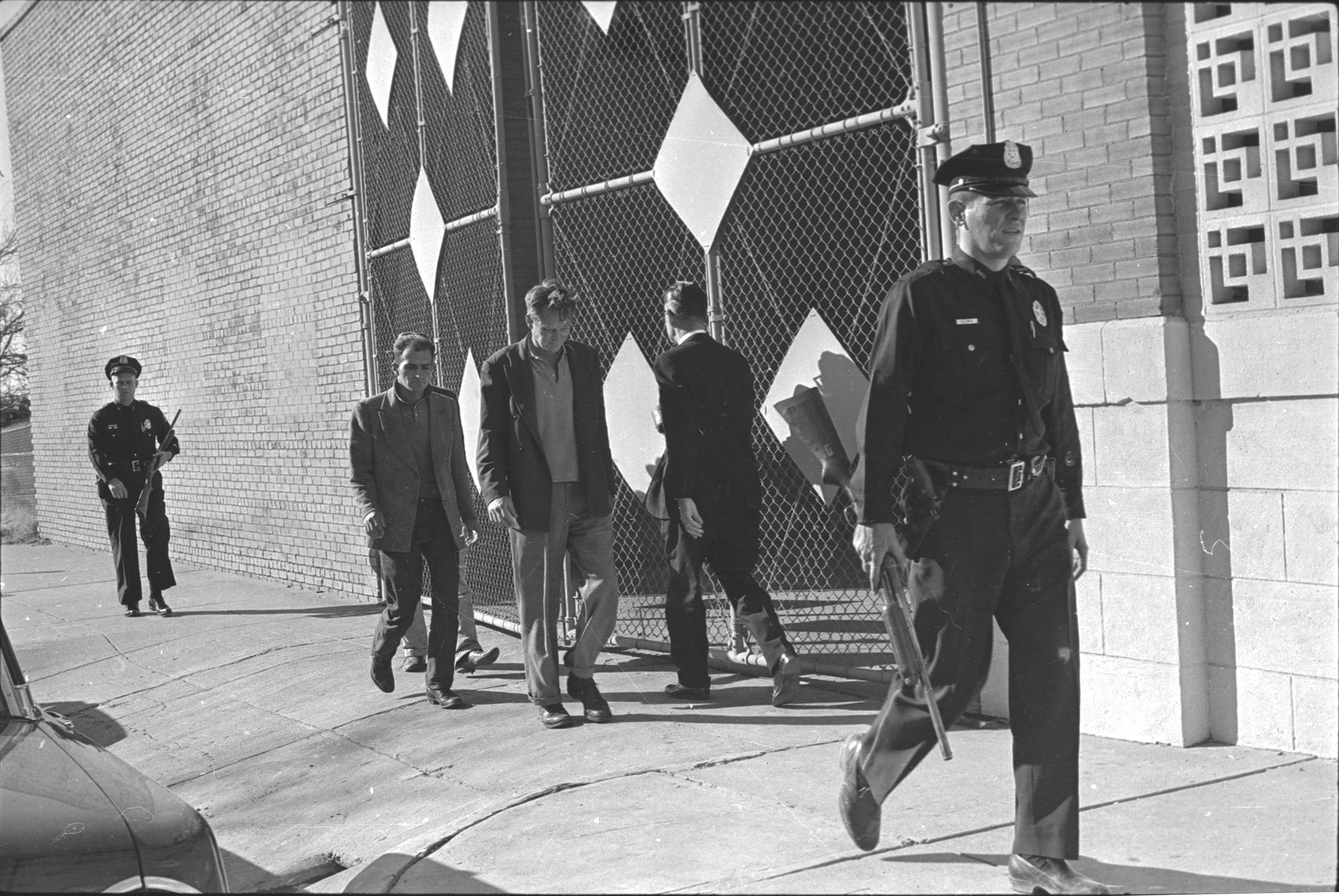 Immediately after the shooting, a crowd of people converged upon the slope to the grassy knoll. The initial reaction from many was that some shots had originated from there. Jean Hill saw a man running toward the railroad tracks. The switch operator stopped the trains from moving, and 3 transients were pulled from the cars and taken into custody. For many years there was no record of their arrests. ++++++++++++++++++++++++++++++++++++++++++++++++++++ On the Trail of the Assassins | Jim Garrison"Malcolm Summers, the owner of a local mailing service, recalled the moment when the shooting ended: Then all of the people started running up the terrace: Everybody was just running around towards the railroad tracks and I knew that they had someone trapped up there…" "...I went back again to the testimony of Lee Bowers, the switch man there, and studied his answers to questions about the aftermath posed by Warren Commission attorney Joseph A. Ball: MR. BOWERS: A large number of people came [from] more than one direction. One group converged from the corner of Elm and Houston, and came down the extension of Elm and came into the high ground, and another line—another large group went across the triangular area between Houston and Elm and then across Elm and then up the incline. Some of them all the way up. Many of them did, as well as, of course, between 50 and a hundred policemen within a maximum of 5 minutes. MR. BALL: In this area around your tower? MR. BOWERS: That’s right. Sealed off the area, and I held off the trains until they could be examined, and there was some transients taken on at least one train. ---------------------------------------------------------- Dallas Police officers Billy Bass and Marvin West were escorting the tramps thru Dealey Plaza. They were brought to the Sheriff's Dept where Capt. Fritz had set up a temporary headquarters to receive witnesses. Deputy Sheriff Harold E. Elkins, "...A while later a City of Dallas policeman came to our office with three prisoners
who he had arrested on the railroad yards. I took these three to the city jail and turned them over to Capt. Fritz..." The House Subcommittee on Government Information and Individual Rights discovered in 1975, that Dallas police arrest records for November 22, 1963, compiled for the Warren Commission, were missing. Then, in 1992, journalist Mary La Fontaine discovered the that day's, arrest records that the Dallas Police Department had released in 1989. There named the three men as Gus W. Abrams, Harold Doyle, and John F. Gedney. Unfortunately, mug shots and fingerprints are still missing. Meanwhile the story hit the LA TimesIn 1996, Marina Oswald wrote her concerns to the to the Assassination Review Board re: the tramp arrest records being under Federal seal. Dallas City Archives Supervisor, Laura McGhee, described to the FBI, a Federal seal on the 3 tramps as well as two others arrested that day, John Elrod and Daniel Wayne Douglas. Marina wrote to John Tunheim of the AARB without a response. 1996 letter from Marina Oswald to John Tunheim of the ARRB:"I would like to know what the Review Board is doing to obtain the following:
The official explanation of why the arrest records for Mr. Elrod, Mr. Gedney, and Mr. Doyle, as well as for
Daniel Wayne Douglas and Gus Abrams were placed "under federal seal" in the Dallas Police Records Division for
26 years as described by Dallas City Archives supervisor Laura McGhee to the FBI in 1992."++++++++++++++++++++++++++++++++++++++++++++++++++++++ Turnin' the KeyIn 1975, Michael Canfield, and Alan J. Weberman released the book, "Coup D'état in America: The CIA and the Assassination of John F. Kennedy". There is a very brief interview with Capt. Fritz and Michael Canfield about the three tramps: Canfield: The case in point is three hobos that were brought in... Fritz: Yes, I know it. I know it. If you talk with the FBI they might help you with it... the FBI would be the ONLY place that you could get that...that's the ONLY ones who'd have it... I don't know anything about them at all. Canfield: They were turned over to you, weren't they? Fritz: NO...the ONLY one who could help you were the FBI. I've told you were you can find out. Fast forward to 1992, the attached LA Times article quotes FBI Special Agent in Charge at Dallas Oliver B. Revell, “Since they had not been interviewed by the FBI, I wanted to complete the record,”Records under Federal seal have since been lost, the FBI denying having spoken to the tramps, Capt. Fritz gave them the tramps. His response made it sound as though they were released without record. That same year, Michael Canfield tracked down Harold Doyle: "...I went to where [Harold] Doyle (one of the “Three Tramps”) was living. I sat down next to him in a coffee shop.
I said, ‘Excuse me, are you Harold Doyle’? He said, ‘Yes’. I said, ‘I’m a journalist from Los Angeles and I’d like to ask
you some questions about your days as a hobo in Dallas’. He jumped up and said, ‘I don’t talk about that’, ran out the door and disappeared.
He turned in his key to his landlady and nobody has seen him since. He’s totally disappeared off the face of the earth.
I find that very questionable. Secondly, I went to Dallas, Texas again and talked to one of the arresting officers.
I won’t give his name right now. But, there were 4 officers involved in arresting the ‘tramps’ and he told me the arrest records were forgeries,
that the police officers who signed the arrest records did not know how their names got on the arrest records.
So, that is a dis-information campaign to protect the true identities of the tramps."
|
|
|
|
Post by Michael Capasse on Jun 20, 2021 10:41:46 GMT -5
Break the Change Lee Oswald lived in New Orleans from the end of April till the beginning of Sept. 1963. He was there with his wife Marina and first child, June. He worked at the Reilly Coffee Company. Across the street was Adrian Alba's Parking Garage, a frequent stop for Lee when he was on a break. That garage was used by FBI that had an office nearby. Lee would sometimes park cars and received envelopes. When Garrison revisited the area in 1966, he realized he was standing at a military intelligence junction. Office of Naval Intelligence, the FBI, Banister, Reilly Coffee was anti Castro, and the CIA, all within a short walk. This 24 year old ex-Marine, Russian defector, loner, had these coverts watching him, and leaving him alone, while he praised the recent flood of Cuban refugees as Batista followers, and blamed the CIA and US Government for the situation. Oswald had been working for Banister that summer, because the leaflets he handed out were stamped 544 Camp St. Lee would go by the unemployment office and pay a couple of guys two dollars an hour, until the press took pictures. In the middle of June, he was at the Domaine Street wharf handing out leaflets and was stopped by Harbour police. The yellow copied flyers with the address Camp St. were collected by the 112th Intelligence Corps Group in New Orleans. On August 9th '63, he was arrested on Canal St. after a scuffle broke out with a local Cuban, Carlos Bringuier. While in custody he requested to see FBI SA, John Quigley, contrary to bureau procedure, Quigley later burned his notes. A few weeks later, Lee was seen on television handing out leaflets in front of the International Trade Mart. Radio interviews followed with local host, William Stuckey, discussing Fair Play for Cuba's response to US policy. It all seemed to be an obvious front, Oswald was being "sheep dipped" into a Castro group as a communist. Garrison Footnote:
"Later, Alba testified to more than Oswald’s visits to the garage. He testified in 1978 before the House Select Committee on
Assassinations that he had “often seen Oswald in Mancuso’s Restaurant on the first floor of 544 Camp Street.
The House Committee conceded that David Ferrie and Guy Banister also were frequent customers at Mancuso’s."
|
|
|
|
Post by Michael Capasse on Jun 20, 2021 10:42:15 GMT -5
Fit to be Tied Over the summer of '63, New Orleans was a hot bed of Anti-Castro activity. The Feds busted a huge ammunition supply at Lake Pontchartrain. The location had been used by various groups as a training camp for a military action against Castro. Eleven arrests were made. Of the eleven arrested, all but two were Cubans exiles. The FBI released all eleven shortly after being arrested. Three years later, as Garrison continued to study the Commission evidence, he came upon the testimony of Lt. Colonel Allison G. Folsom. Folsom told the members that, Oswald had been tested in the Russian language. Jim knew the only way a soldier would be tested in Russian would be for intelligence purposes. And although Lee got only two more Russian words right than wrong, "...I am reminded of
the man who said his dog was not very intelligent because he could beat him three games out of five when they played chess." Regardless of the purpose, Lee was able to defect to Russia with radar secrets that took over 1,500 man hours to reset, and then come home on a loan paid for by the State Dept. When he was in trouble in New Orleans he called upon the FBI. Once settled in New Orleans, he would frequent Adrian Alba's Garage where he parked cars for G-men and pocketed envelopes of cash. He was on the radio and television in a pro Castro role, getting some publicity in a scuffle with the other side. But still, he was left alone. +++++++++++++++++++++++++++++++++++++++++++++++++++++++++++++++++++++++ Joannides Fitness Report218 (CIA Vaughn Index) Document number 1161488
219 (CIA Vaughn Index) Document number 1153248George Joannides, joined the CIA in 1951 and was involved with Central America activities of the agency. He later became chief of the Psychological Warfare branch of the CIA's JM/WAVE station in Miami, and in that role he worked closely with Carlos Bringuier and the Directorio Revolucionario Estudiantil (DRE), a militant right-wing, anti-Communist, anti-Castro, anti-Kennedy, group. Joannides was a thorn in the side of truth in this matter. In 1978 he was the CIA liaison to the HSCA regarding the Kennedy assassination. During this time, he failed to disclose his involvement with the setup of groups within this network that included Lee Harvey Oswald. More recently, a Declaration Affidavit from Attorney Dan Hardway to the CIA in 2016, is the latest effort to get these documents released. George Joannides Fitness Reports, updating the activities and status of all the groups he was involved at the time has never been available. Of particular interest and may not exist anymore, are reports that cover the period Lee was in New Orleans. It is not known what dates still exist. Documents numbered, respectively, 1161488 and 1153248, are another George Joannides Fitness Report (1161488),
and another Form Discussing Intelligence Methods re Joannides (1153248), but in the case of these two documents,
even the date of the document is withheld. Given that the CIA has not released Mr. Joannides's Fitness Report that
would have covered the period when Lee Harvey Oswald was in New Orleans interacting with the Joannides run DRE, the
document becomes of extreme public interest and import.
If this document is not the Fitness Report for that time period, then it is still of significance in that it would
detail additional information about Mr. Joannides's role and duties in the CIA and his potential involvement with other
persons of interest in the Kennedy investigation. Similar considerations apply to Document number 1153248.(Declaration of Dan Hardway, sworn affidavit to DC District Court, April 25, 2016)
|
|
















